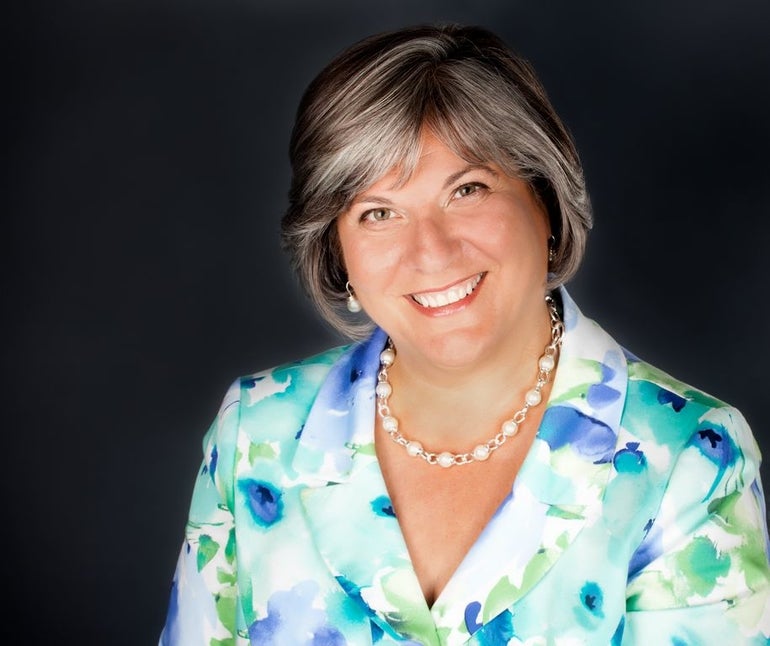Community Health Centers
 Courtesy photo
Antonia McGuire, CEO of Edward M. Kennedy Community Health Center in Worcester, says community health centers are open to people from all walks of life.
Courtesy photo
Antonia McGuire, CEO of Edward M. Kennedy Community Health Center in Worcester, says community health centers are open to people from all walks of life.
With a high concentration of life sciences and medical device companies creating innovative products, and public health leaders on the forefront of health care policy, the Bay State often sets health care precedent. An obvious example was the 2006 universal health care law enacted under former Gov. Mitt Romney. Today, Massachusetts has the lowest rate of uninsured people anywhere in the country, hovering around two percent.
But trailblazing started long before state health care reform. For instance, community health centers, now nationwide fixtures, got their start in Massachusetts 50 years ago, a milestone that community health center leaders celebrated last month. And 50 years after their inception in Boston, the community health center landscape has blossomed and evolved, from a small number of providers that acted as a safety net for the disadvantaged, to a large network of centers offering state-of-the-art health care technology and delivery for people from all walks of life.
James W. Hunt, Jr., president and CEO of the Massachusetts League of Community Health Centers since 1979, said centers are more relevant today than ever. While the rest of the provider community is striving to adopt population health management methods and create “patient-centered medical homes” that meet all of a patient’s health care needs, community health centers are ahead of the curve on both fronts. In fact, fostering patient-centered medical homes has been engrained in the community health center model from the start, he said.
“They’re the future of the health care delivery system,” Hunt said, predicting that community-based care, from all types of providers, will be the focal point of health care policy makers in the years to come.
A brief history
While community-based care has received emphasis since the enactment of health care reform at the state and federal levels (primarily because it drives down the cost of delivering care), it started out as a means for reaching people who had limited access to health care in the 1960s. The movement was started by two physician activists, Dr. Jack Geiger and Dr. Count D. Gibson Jr., who developed the model and founded two community health centers in 1965. The first one was the Columbia Point Health Center in Dorchester, and the second was located in rural Mound Bayou, Miss. Community health centers gained momentum a year later after Sen. Edward M. Kennedy visited Columbia Point Health Center, leading him to secure $51 million in funding for the development of similar health centers across the U.S. Today, there are more than 1,200 community health centers across the country, with 49 located in Massachusetts.
But the development of community health centers was a grassroots effort, too. Antonia McGuire, CEO of the Worcester-based Edward M. Kennedy Community Health Center (CHC), got involved in community health centers in the 1980s, at a time when groups of women were working as community organizers to increase health care resources for women and children.
The Edward M. Kennedy CHC was born of this movement, starting in the Great Brook Valley public housing development in Worcester at a time when primary care options for low-income people in the city were fewer. Saint Vincent Hospital and UMass Memorial Medical Center were smaller at that time, said McGuire, a registered nurse who joined the organization in 2008.
“It was a very different dynamic in that day, but it was pretty clear that primary care was needed for poor people,” McGuire said.
Open to all
But today, McGuire and other say that community health centers are not just for the poor. McGuire said that insurance status isn’t a consideration at Kennedy CHC, and that goes for the commercially insured and the remaining uninsured alike. She noted that often, patients have insurance but lack a primary care physician, and so they turn to their local community health center.
“I would say that everyone is welcome through our doors,” McGuire said.
Hunt, the CEO of the League, said community health centers are seeing a palpable increase in the number of patients that are covered by commercial insurance. He attributes that to centers’ state-of-the-art facilities and the fact that many community health centers are teaching institutions, affiliated with medical schools.
Scale is another advantage, Hunt said. Community health centers are often large enough to form medical teams, including doctors, nurse practitioners and behavioral health specialists. This approach is thought to improve a patient’s outlook.
At the Family Health Center of Worcester, as much as 15 percent of patients are commercially insured, said CEO Frances Anthes, who has worked at the center since 1991. Those patients usually choose Family Health Center for care because it’s a teaching health center, which usually means the quality of care is a cut above non-teaching providers, Anthes said. They also have access to many types of specialty care through the health center, for a one-stop shopping experience. And finally, the community health center approach is a democratic one. Fifty-one percent of community health center governing board members must be patients themselves.
“It turns that traditional medical model a little bit on its head,” Anthes said.
And like Hunt, Anthes said the health center has long been managing the health care of the patients they treat, rather than treating patients when they’re sick without looking at the bigger picture of the patient’s health care needs. For example, integrating behavioral health has always been part of the Family Health Center’s mission, since its inception in 1972.
Dr. Brian Sullivan, assistant medical director at Kennedy CHC, said he can’t say for sure that community health centers are ahead in terms of efficient health care delivery, but federal funding for population health management initiatives does enable centers to do more than the average provider in that arena. For example, the Kennedy CHC has designed cancer prevention classes for populations that are found to be at particular risk.
But community health centers have challenges too. Sullivan said hiring is a struggle, because centers on average pay less than market value. That means that the clinicians they hire are often more mission driven. This is true of Sullivan, who did social work before he was a doctor.
“I like the patients and I like the people I work with,” Sullivan said. “Patients are typically disadvantaged as a group and are often very grateful for the services you provide.”
Even if hiring is a challenge, community health centers will continue to play a large part on the supply of health care providers across the Bay State and beyond. For one thing, community health centers received a huge influx of funding under the Obama Administration. Both the Family Health Center of Worcester, and the Kennedy CHC, have renovated space and expanded their footprints.
Kennedy was able to open a Milford site, and Family Health Center of Worcester boosted medical capacity by 30 percent, and dental capacity by 40 percent, through a project that was completed at its flagship location on Queen Street in Worcester earlier this year.
“We basically have a new health center, which we’re thrilled about,” Anthes said.









0 Comments